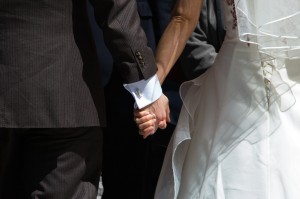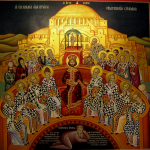In light of Pope Francis’s recent visit to the US, I am gonna look into Not Just Good, but Beautiful, a compilation of interfaith talks from Humanum: An International Interreligious Colloquium. This book gives perspectives on marriage from Catholic, Protestant, Eastern Orthodox, Mormon, Jewish, Muslim, Jain, Buddhist, and Hindu perspectives.
Since the Humanum Colloquium was organized by Pope Francis, there are more Catholic perspectives, but the beauty of this book was that while the theme of of the colloquium was to show the beauty of marriage between a man and a woman, each Catholic had a unique way of showing how marriage is beautiful. Pope Francis begins the colloquium with the word “complementarity” which a word that gets echoed in the subsequent essays. To Pope Francis, “complimentarity is the root of marriage and family.” In this day and age where love and marriage seemed to lack concrete definitions aside from feelings, Pope Francis says “Family is an anthropological fact-a socially and culturally related fact.” Pope Francis’s love for the family was easily seen in his visit to the US and I pray that people will look further into it and realize the truth, beauty, and goodness that the family has to offer.
Gerhard Cardinal Muller looks at marriage from a theological perspective and sees that the differences between man and woman as “an essential element to understanding the human being and our journey toward God.” Sister M. Prudence Allen looks at “complementarity” from a philosophical perspective. Jean Laffitte’s perspective looks into marriage as a sacrament and how marriage reflects Christ’s relationship with His Church. Ignacio Ibarzabal looks at marriage from a millenial perspective.
 The perspectives from other faiths were equally beautiful. I love how Jonathan Sacks looks at marriage from a historical and anthropological perspective, tying science and history into his Jewish faith. Penecostal director Jacqueline C. Rivers also looks at marriage using a lot of history and the perspectives from African-American culture as well as the Pentecostal beliefs. Kala Acharya, a Hindu, looks at marriage combining history, philosophy and the beliefs of Hinduism. Johann Christoph Arnold, an Anabaptist, looks into his personal life and shows how marriage can have its ups and downs when playing out in the real world. Henry B. Eyring, a Mormon, does something similar with his essay. Wael Farouq (Muslim) and Nissho Takeuchi (Buddhist) look at the languages of their faiths for insight on how their faiths see love and marriage. Reverent Nicholas Thomas Wright looks at marriage from a strictly Biblical perspective while Rick Warren gives a good practical “how to” perspective. Tsui-Ying Sheng’s essay is one of my favorites because it looks at yin and yang beyond the coolness of the symbol and actually applies the philosophy of the symbol to her life. Russell D. Moore, a Baptist, also ties in the theologies from the Baptist denomination into how things are today.
The perspectives from other faiths were equally beautiful. I love how Jonathan Sacks looks at marriage from a historical and anthropological perspective, tying science and history into his Jewish faith. Penecostal director Jacqueline C. Rivers also looks at marriage using a lot of history and the perspectives from African-American culture as well as the Pentecostal beliefs. Kala Acharya, a Hindu, looks at marriage combining history, philosophy and the beliefs of Hinduism. Johann Christoph Arnold, an Anabaptist, looks into his personal life and shows how marriage can have its ups and downs when playing out in the real world. Henry B. Eyring, a Mormon, does something similar with his essay. Wael Farouq (Muslim) and Nissho Takeuchi (Buddhist) look at the languages of their faiths for insight on how their faiths see love and marriage. Reverent Nicholas Thomas Wright looks at marriage from a strictly Biblical perspective while Rick Warren gives a good practical “how to” perspective. Tsui-Ying Sheng’s essay is one of my favorites because it looks at yin and yang beyond the coolness of the symbol and actually applies the philosophy of the symbol to her life. Russell D. Moore, a Baptist, also ties in the theologies from the Baptist denomination into how things are today.
Complementarity is the overall theme in this book. Many people look at marriage and family and think that it’s just about feelings. But from observing my married friends, I realized that you don’t have to have everything in common with your spouse. The best relationships I know (fictional and in reality) involve two people who aren’t exactly alike but still work together perfectly because they balance each other’s needs. Men and women are always going to be different, no matter how many times people on tumblr and the media say otherwise. But it’s not a bad thing.
I highly recommend this book for people who want to understand marriage on a deeper level.
Visit the Patheos Book Club on Not Just Good, But Beautiful here.













